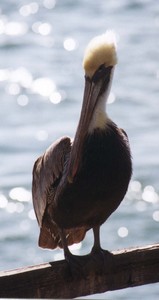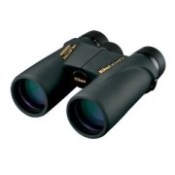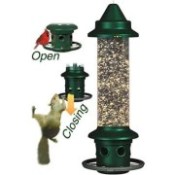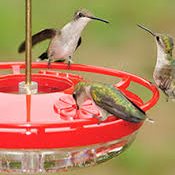
U.S. State Bird of Louisiana
-
Brown Pelican

The Brown Pelican is once again a common bird in the U.S. and can be seen fishing along the Atlantic Coast, the Gulf Coast and the California coast. But that was not always true. Pelicans were slaughtered and their nests were destroyed because they ate fish and were thought to compete with commercial fishing. But that was not the main problem.
A pesticide called DDT was getting into the environment and was concentrating in fish. Birds that ate fish (and birds that preyed upon other birds that ate fish) were contaminated. The chemical caused them to lay eggs with shells so thin that the eggs broke while they were being incubated. By the 1960s Brown Pelicans were rare along the Gulf Coast (Including Louisiana) and in Southern California.
In 1970 the Brown Pelican was declared an Endangered Species (under a law that preceded the Endangered Species Act of 1973). In 1972, the use of DDT in the U.S. was banned by the Environmental Protection Agency (though it was still produced in the U.S. and used in other countries).
With the banning of DDT and their protection from direct prosecution, Brown Pelican populations have recovered to the point they were De-listed (removed from special Endangered Species protection. Brown Pelicans were De-listed in the Southeastern U.S. in 1995 and they were De-listed in California in 2009.
|
Brown Pelican Videos
An Excellent segment from the BBC showing pelicans catching fish in slow motion.
Brown Pelican Chicks
Notice that one chick is much bigger than the other. This is because their eggs hatch asynchronously, so the first egg layed hatches first. The larger chick may only be two or three days older, but they grow so fast it makes a big difference. Also notice the chicks are hot and they are "gular fluttering" to cool off.
History:The Brown Pelican was chosen as the State bird of Louisianna on July 27, 1966. It is also found on the State Seal. Almost every person in Louisiana is familiar with the Brown Pelican and perhaps the reason it was chosen as the State Bird is because of the great protection it gives its young.
|
Our Favorite Bird Watching Binoculars, Squirrel-Proof Feeder & Hummingbird Feeder Read Our Reviews: |
||

Nikon Monarch M5
Best mid-priced bird watching binoculars. Waterproof, shockproof, multi-coated ED-Glass. |

|

Best Hummingbird Feeder
Drip-Free, Ant-moat, Durable, Easy to Fill and Clean. |
| Click Images or Links To View More Info | ||